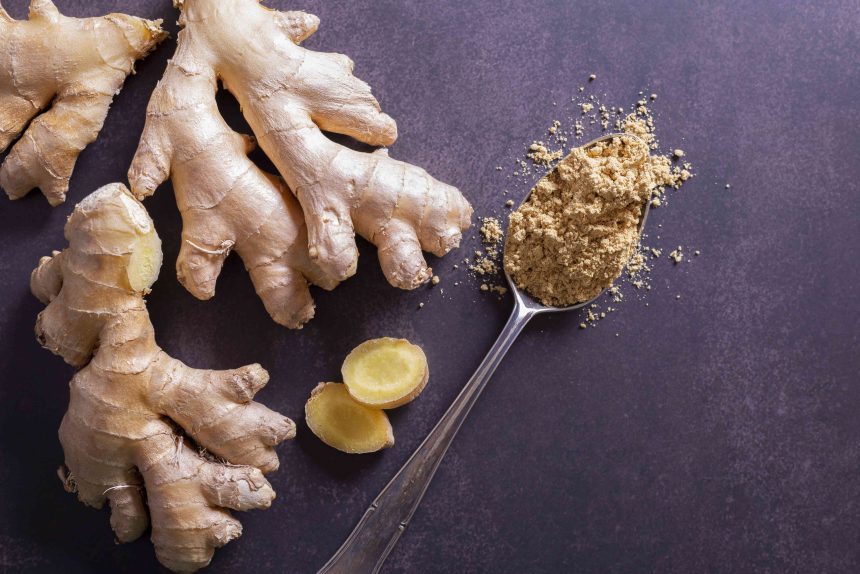There’s so much to love about ginger, from the pungent smell that announces its presence ahead of time to its one-of-a-kind flavor. It’s an ingredient that’s available year-round and great to have on hand in your kitchen, but what is the best way to store ginger? We asked Abbie Leeson, owner of The Ginger People and Gin Gins. She purchases a whopping one and a half to two million pounds of ginger per year for her brands, so she knows a thing or two about buying and storing this flavorful root. She shared her tips to make sure we’re consuming this culinary superstar at its best.
Abbie Leeson, co-owner and founder of The Ginger People and Gin Gins, the largest supplier of organic and all-natural ginger products in the U.S.
4 Ways to Store Ginger
“Ginger is one of the most versatile ingredients in the culinary world,” says Leeson. “It’s got this extraordinary flavor profile that can flip from sweet to savory recipes, making it a perfect addition to a wide variety of dishes.” When it comes to storing the rhizome, there are pros and cons to each method; it comes down to how long you want to store the ginger.
At Room Temperature
Just like its sister root, garlic, you can keep ginger out on the counter—at least for shorter periods of time. This is Leeson’s favorite method for short-term storage. She recommends not leaving ginger at room temperature for more than one to two weeks. “With time, it will start to lose its moisture and flavor, then shrivel.” Leeson clarifies that it’s still usable when shriveled but not as potent.
In the Refrigerator
Refrigeration can buy you more time, up to a few more weeks. Wrap fresh ginger in a paper towel and put it in an airtight bag in the refrigerator. “It can last three to four weeks, but it may get spongy in the refrigerator, says Leeson. She notes the refrigerator is her least favorite way to store ginger.
In the Freezer
Leeson prefers freezing for longer-term storage. If you have a large quantity of ginger, peel it, cut it into coin-sized pieces, put it into freezer bags, and freeze it for up to six months.
In Oil or Vinegar
You can also store fresh ginger in a neutral vegetable oil or your favorite vinegar. “This can both preserve freshness and infuse flavor,” says Leeson. Wash, peel, and cut the ginger, then submerge it in oil or vinegar and store it in the refrigerator. (You don’t usually refrigerate oils or vinegars, but Leeson says you need to if you have infused them with ginger.) Leeson also loves making ginger juice, which she uses to make daily health shots and to flavor sparkling water or tea.
3 Tips For Storing Fresh Ginger for Longer
Buy fresh: First up, as with many other foods, the best way to make ginger last longer is to buy the freshest ginger you can find. Ginger is generally sold unrefrigerated at the grocery store, in a clump known as a hand. “If the skin is shiny and the hand is heavy and plump, it’s most likely fresher,” says Leeson.
Don’t buy more than you need: Leeson recommends buying small quantities of fresh ginger as needed: “Just break off a finger from the hand of fresh ginger, like you would a banana from a bunch. The exposed piece will heal over quickly for the next person,” she says.
What not to buy: Avoid ginger that is spongy, moldy, or stinky, says Leeson. If the ginger root you bought displays any of these qualities, throw it away.
Storing Powdered, Crystallized, or Prepared Ginger
While Leeson prefers fresh ginger to other forms for everyday cooking, she knows how to store other forms of her favorite root to keep them at their prime.
Powdered Ginger
The defning ingredients for classics like gingerbread and gingersnaps, Lesson says powdered ginger can last a few years. How do you know if it’s still good? Smell it—if it’s lost its aroma, it’s most likely lost its flavor,” she advises.
Crystallized Ginger
Crystallized ginger can also last a few years. “Fresh crystallized ginger is succulent, chewy, and plump,” says Leeson. “It should have a crackly crust and a jelly-like appearance inside. Like fresh ginger, if your crystallized ginger is shriveled and concave, it’s losing its freshness and flavor. It dries out over time, but it’s still edible. It’s preserved in sugar, after all.”
Prepared Ginger
Leeson also steers clear of squeeze tubes of prepared ginger, which can contain stabilizers and preservatives. She recommends following the manufacturer’s packaging for storage instructions.








